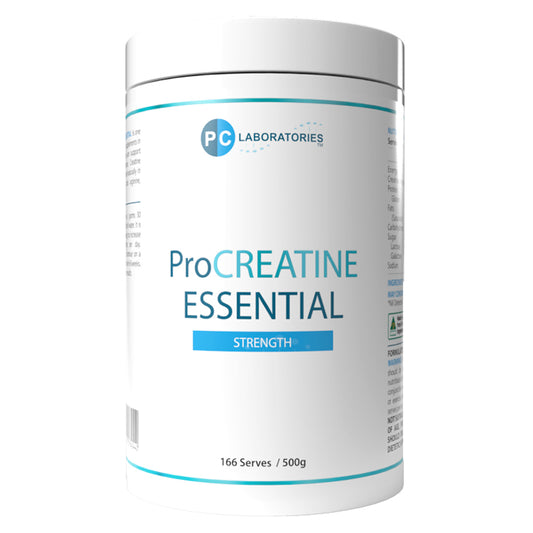In a world where high stress levels can become constant, finding effective ways to manage them is crucial. Breathwork has been gaining popularity as a practice that involves consciously controlling your breathing patterns to influence your physical and mental state. But what exactly is breathwork, how does it work, and why is it so effective? Let's delve into the science and benefits of this practice.
In a society where the hustle culture dominates and stress-related illnesses are on the rise, many are turning inward, literally, for relief. Breathwork, a practice that centres on controlled breathing techniques, has reemerged from ancient traditions to become a modern stress-busting strategy. More than a meditative tool, breathwork is now backed by scientific research showing that how we breathe can significantly impact our health. This research has found benefits for mental clarity, immune function, energy levels, and emotional balance.
The main attraction of breathwork is its accessibility. You don't need equipment, a gym membership, or hours of spare time. Just a few minutes of intentional breathing each day can recalibrate the body’s stress response, lower cortisol, and improve sleep. Without the side effects that some medications or practices can bring.
With growing clinical interest and a foundation in neuroscience and physiology, breathwork has transitioned into an area of interest for many. This article explores what breathwork is, how it works on a physiological level, and why its benefits are too good to ignore.
What Is Breathwork?
Breathwork refers to various breathing techniques that involve consciously altering your breathing patterns to achieve specific outcomes. People can experience improved relaxation, increased energy, or a significant emotional release. While breathwork has ancient roots in practices like yoga and meditation, modern science is now validating its benefits.
The Science Behind Breathwork
Breathing is more than just a physiological necessity; it's intricately linked to our nervous system. The autonomic nervous system (ANS), which controls involuntary bodily functions, has two main branches:
> Sympathetic Nervous System (SNS): Often referred to as the "fight or flight" system, it prepares the body for stressful situations. Great if we need to fight off or run away from predators, as it favours energy to the muscles.
> Parasympathetic Nervous System (PNS): Known as the "rest and digest" system, it promotes relaxation and recovery. This is the part we miss out on with modern life- the state of stress becomes chronic.
Certain breathing techniques can stimulate the PNS, helping to counteract the effects of stress. For instance, slow, deep breathing can lower heart rate and blood pressure, reduce cortisol levels, and enhance overall well-being.
Origins of Breathwork
Breathwork practices have been integral to various cultures for centuries. In India, pranayama (an ancient yogic discipline) emphasises breath control to enhance spiritual and physical health. In Chinese medicine, breath control is used to balance the body's energy, or "qi." These traditions recognised the profound impact of breath on the body and mind long before modern science began to explore these connections.
Short-Term and Long-Term Effects
> Short-Term:
- Reduced Stress and Anxiety: Engaging in breathwork can activate the PNS, leading to a decrease in stress hormones like cortisol and promoting a state of calm .
- Improved Focus and Clarity: Certain techniques, such as box breathing, can enhance concentration and mental clarity by increasing oxygen supply to the brain.
- Enhanced Emotional Regulation: Breathwork can help process and release pent-up emotions, leading to improved mood and emotional balance.
> Long-Term:
- Improved Respiratory Function: Regular practice can increase lung capacity and efficiency, benefiting overall respiratory health.
- Enhanced Cardiovascular Health: Consistent breathwork can lower blood pressure and heart rate, reducing the risk of heart disease.
- Better Sleep Quality: Techniques like moon breathing have been shown to improve sleep by promoting relaxation and reducing nighttime anxiety.
Five Benefits of Breathwork
1. Stress Reduction: Breathwork can lower cortisol levels and activate the PNS, leading to reduced stress and anxiety.
2. Improved Sleep: Techniques like moon breathing can enhance sleep quality by promoting relaxation and reducing nighttime anxiety.
3. Enhanced Mental Clarity: Practices such as box breathing can improve focus and cognitive function.
4. Emotional Healing: Breathwork can facilitate the release of trapped emotions, aiding in emotional processing and healing.
5. Increased Energy Levels: Certain techniques can boost oxygen intake, leading to increased vitality and energy.
Cellular-Level Effects of Breathwork
At the cellular level, breathwork influences the body's oxygen and carbon dioxide balance. By consciously altering breathing patterns, you can enhance oxygen delivery to tissues and promote the removal of metabolic waste products. This improved gas exchange supports cellular metabolism, boosts energy production, and aids in detoxification.
Beyond improving oxygen delivery, breathwork has impressive effects on cellular resilience and inflammation. Studies have shown that controlled breathing can modulate the ANS in ways that influence mitochondrial efficiency (the powerhouse of the cell, responsible for energy production or ATP). With more efficient mitochondria, cells perform better under stress and recover more rapidly from oxidative damage.
Breathwork has been linked to lower levels of pro-inflammatory cytokines, which are molecules that signal inflammation throughout the body. A reduction in these markers is crucial, as chronic inflammation is a contributing factor in numerous health conditions, including cardiovascular disease, autoimmune disorders, and neurodegenerative illnesses. By creating a more balanced internal environment, breathwork helps reduce systemic stress at the cellular level, supporting both short-term recovery and long-term health.
Popular Breathwork Techniques
It’s important to have a technique in place to get the most out of your practice, rather than risk hyperventilation. Remember, practice makes progress! Several breathwork methods have gained popularity for their effectiveness:
- Box Breathing: Inhale for four counts, hold for four, exhale for four, and hold again for four. This technique promotes focus and relaxation.
- Diaphragmatic Breathing: Involves breathing deeply into the diaphragm, enhancing oxygen intake and promoting relaxation.
- Wim Hof Method: Combines controlled hyperventilation with breath retention and cold exposure to increase energy and resilience.
- Moon Breathing: Involves inhaling through the left nostril and exhaling through the right to activate the PNS and promote relaxation.
Is There Any Risk?
While breathwork is generally safe, it's essential to practice it mindfully. People with certain health conditions, such as respiratory or cardiovascular issues, should consult a healthcare professional before starting breathwork practices. It's also crucial to listen to your body and avoid overextending yourself during sessions.
Can Supplements Help?
Some supplements promote better blood flow and oxygen delivery to the cells. They can complement breathwork practices by supporting the respiratory system and energy production:
Citrulline: Originally found in watermelon, this amino acid is great for safely widening blood vessels to improve blood flow. Try ProCITRULLINE Essential for a quality 2:1 malate source.
Carnitine: Aids in energy metabolism and mitochondrial health by transporting fatty acids into the cell. ProALCAR Essential will have you feeling energised and focused quickly.
Iron: Essential for oxygen transport in the blood. Try to consume in the diet along with cofactors like B and C vitamins. Undertake an iron study blood test if you suspect a deficiency, and only supplement when necessary.
The Last Exhale
Breathwork offers a natural, accessible way to manage stress and enhance overall health. It may only involve minutes of conscious breathing incorporated into a daily routine to feel the benefits. Consider breathwork if you are seeking relief from stress and long-term benefits for physical and mental well-being.
Breathwork is a powerful tool for managing stress, enhancing physical health, and promoting emotional well-being. By understanding its origins, methodology, and benefits, you can harness the power of your breath right now. Leading a healthier, happier life does not have to cost the earth or take hours out of your day. Breathe right, and improve your stress levels for the better.
References
Anantharaman, M., Salgado, S., de Oliveira, M., Kurth, F., & Huberman, A. D. (2023). Brief structured respiration practices enhance mood and reduce physiological arousal. Cell Reports Medicine, 4(2), 100974. https://doi.org/10.1016/j.xcrm.2022.100974
News-Medical. (2023, October 9). The science behind breathwork and stress reduction. News-Medical.net. https://www.news-medical.net/health/The-Science-Behind-Breathwork-and-Stress-Reduction.aspx
Fincham, G.W., Strauss, C., Montero-Marin, J. et al. Effect of breathwork on stress and mental health: A meta-analysis of randomised-controlled trials. Sci Rep 13, 432 (2023). https://doi.org/10.1038/s41598-022-27247-y
Balban MY, Neri E, Kogon MM, Weed L, Nouriani B, Jo B, Holl G, Zeitzer JM, Spiegel D, Huberman AD. Brief structured respiration practices enhance mood and reduce physiological arousal. Cell Rep Med. 2023 Jan 17;4(1):100895. doi: 10.1016/j.xcrm.2022.100895. Epub 2023 Jan 10. PMID: 36630953; PMCID: PMC9873947.
Banushi B, Brendle M, Ragnhildstveit A, Murphy T, Moore C, Egberts J, Robison R. Breathwork Interventions for Adults with Clinically Diagnosed Anxiety Disorders: A Scoping Review. Brain Sci. 2023 Feb 2;13(2):256. doi: 10.3390/brainsci13020256. PMID: 36831799; PMCID: PMC9954474.








